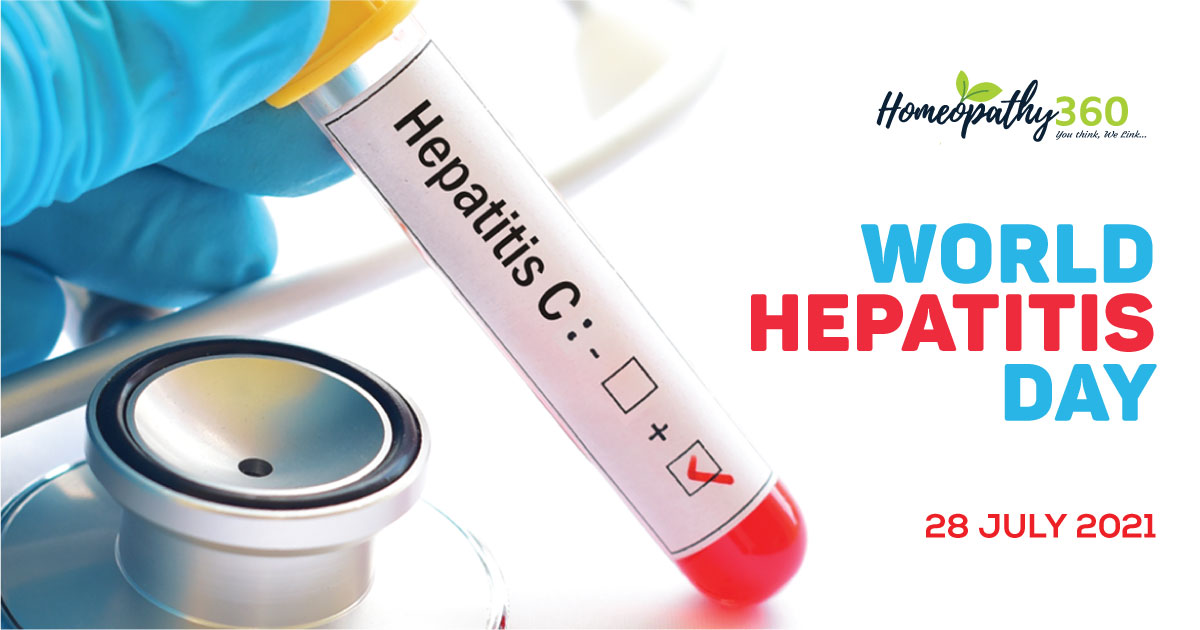
World Hepatitis Day is observed each year on 28 July, on the occasion of the birthday of Nobel-prize winning scientist, Dr Baruch Blumberg, who discovered Hepatitis B virus (HBV) and developed a diagnostic test and vaccine for the virus. It was aimed to raise awareness of viral hepatitis. The theme of 2021 is “Hepatitis can’t wait”, conveying the urgency of efforts required to eliminate hepatitis as a public health threat by 2030.
- People living with viral hepatitis unaware can’t wait for testing
- People living with hepatitis can’t wait for life saving treatments
- Expectant mothers can’t wait for hepatitis screening and treatment
- Newborn babies can’t wait for birth dose vaccination
- People affected by hepatitis can’t wait to end stigma and discrimination
- Community organizations can’t wait for greater investment
- Decision makers can’t wait and must act now to make hepatitis elimination a reality through political will and funding.
Hepatitis is defined as inflammation of liver causing severe liver disease, hepatocellular cancer, etc. The various types of viruses include Hepatitis A, Hepatitis B, Hepatitis C, Hepatitis D, and Hepatitis E as follows:
Hepatitis A is caused by the hepatitis A virus (HAV), found in stool and blood of people who are infected. Hepatitis A is very contagious and spreads when someone unknowingly ingests the virus — even in microscopic amounts — through close personal contact with an infected person or through eating contaminated food or drink. Symptoms of hepatitis A can last up to 2 months and include fatigue, nausea, stomach pain, and jaundice.
Hepatitis B is caused by the hepatitis B virus (HBV) which may spread when blood, semen, or other body fluids from a person infected with the virus enters the body of someone who is not infected. This can happen through sexual contact; sharing needles, syringes, or other drug-injection equipment; or from mother to baby at birth. Not all people newly infected with HBV have symptoms, but for those that do, symptoms can include fatigue, poor appetite, stomach pain, nausea, and jaundice. For many people, hepatitis B is a short-term illness. For others, it can become a long-term, chronic infection that can lead to serious, even life-threatening health issues like cirrhosis or liver cancer.
Hepatitis C is a liver infection caused by the hepatitis C virus (HCV) which spreads through contact with blood from an infected person. Today, most people become infected with the hepatitis C virus by sharing needles or other equipment used to prepare and inject drugs. For some people, hepatitis C is a short-term illness, but for more than half of people who become infected with the hepatitis C virus, it becomes a long-term, chronic infection. Chronic hepatitis C can result in serious, even life-threatening health problems like cirrhosis and liver cancer. People with chronic hepatitis C often have no symptoms and don’t feel sick. When symptoms appear, they often are a sign of advanced liver disease.
Hepatitis D, also known as “delta hepatitis,” is a liver infection caused by the hepatitis D virus (HDV). Hepatitis D only occurs in people who are also infected with the hepatitis B virus. Hepatitis D is spread when blood or other body fluids from a person infected with the virus enters the body of someone who is not infected. Hepatitis D can be an acute, short-term infection or become a long-term, chronic infection. Hepatitis D can cause severe symptoms and serious illness that can lead to life-long liver damage and even death. People can become infected with both hepatitis B and hepatitis D viruses at the same time (known as “coinfection”) or get hepatitis D after first being infected with the hepatitis B virus (known as “superinfection”).
Hepatitis E is a liver infection caused by the hepatitis E virus (HEV). HEV is found in the stool of an infected person. It is spread when someone unknowingly ingests the virus – even in microscopic amounts. In developing countries, people most often get hepatitis E from drinking water contaminated by feces from people who are infected with the virus. In the United States and other developed countries where hepatitis E is not common, people have gotten sick with hepatitis E after eating raw or undercooked pork, venison, wild boar meat, or shellfish. In the past, most cases in developed countries involved people who have recently traveled to countries where hepatitis E is common. Symptoms of hepatitis E can include fatigue, poor appetite, stomach pain, nausea, and jaundice. However, many people with hepatitis E, especially young children, have no symptoms.
“With a person dying every 30 seconds from a hepatitis related illness – even in the current COVID-19 crisis – we can’t wait to act on viral hepatitis.”
Searching Tags: World Hepatitis Day 2021, World Hepatitis Day History, World Hepatitis Day Theme , World Hepatitis Day Significance, World Hepatitis Day Causes





